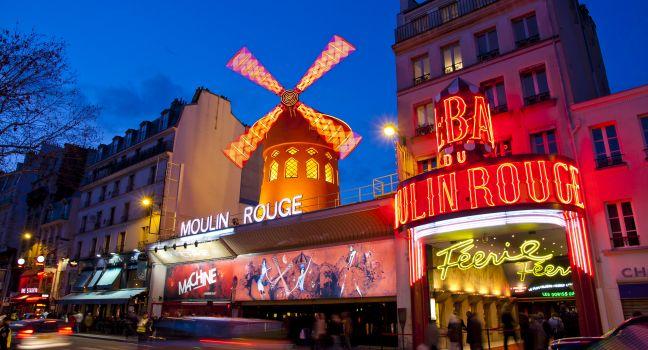Montmartre

Montmartre has become almost too charming for its own good. Yes, it feels like a village (if you wander off the beaten path); yes, there are working artists here (though far fewer than there used to be); and yes, the best view of Paris is yours for free from the top of the hill (if there's no haze). That's why on any weekend day, year-round, you can find scores of visitors crowding these cobbled alleys, scaling the staircases that pass for streets, and queuing to see Sacré-Coeur, the "sculpted cloud," at the summit.
If you're lucky enough to have a little corner of Montmartre to yourself, you'll understand why locals love it so. Come at nonpeak times, on a weekday, or in the morning or later in the evening. Stroll around Place des Abbesses, where the rustic houses and narrow streets escaped the heavy hand of urban planner Baron Haussmann. Until 1860 the area was, in fact, a separate village, dotted with windmills. Always a draw for bohemians and artists, many of whom had studios at what is now the Musée de Montmartre and theBateau-Lavoir, Montmartre has been home to such painters as Suzanne Valadon and her son Maurice Utrillo, Picasso, van Gogh, Géricault, Renoir, and, of course, Henri de Toulouse-Lautrec, whose iconic paintings of the cancan dancers at the Moulin Rouge are now souvenir-shop fixtures. While you can still see shows at the Moulin Rouge in Place Blanche and the pocket-size cabaret Au Lapin Agile, much of the entertainment here is on the seedier side—the area around Pigalle is the city's largest red-light district, though it's far tamer than it used to be. Boulevard de Clichy was virtually an artists' highway at the turn of the 20th century: Degas lived and died at No. 6, and Picasso lived at No. 11. The quartier is a favorite of filmmakers (the blockbuster Moulin Rouge was inspired by it), and visitors still seek out Café des Deux Moulins at 15 rue Lepic, the real-life café (unfortunately with a remodeled look) where Audrey Tautou waited tables in 2001's Amélie. In 1928 Studio 28 opened as the world's first cinema for experimental films.
Recommended Fodor's Video
Elsewhere in Montmartre
Around the Louvre >
Restaurants (28), Things to do (72), Hotels (15)
Champs-Élysees >
Restaurants (26), Things to do (52), Hotels (29)
Eastern Paris >
Restaurants (23), Things to do (45), Hotels (11)
Around the Eiffel Tower >
Restaurants (27), Things to do (25), Hotels (11)




